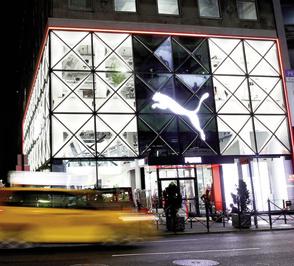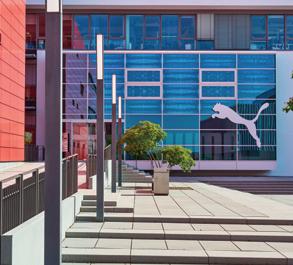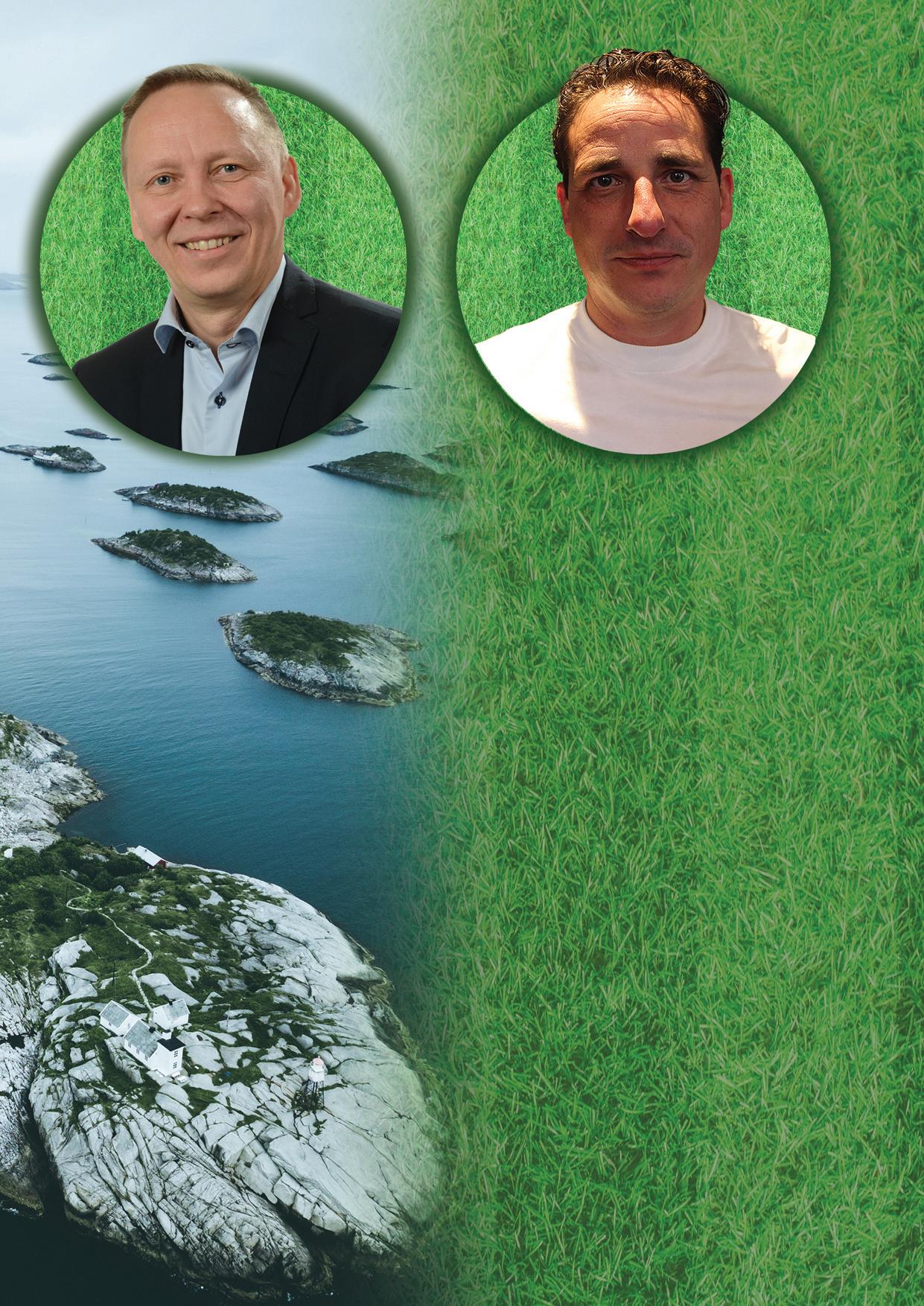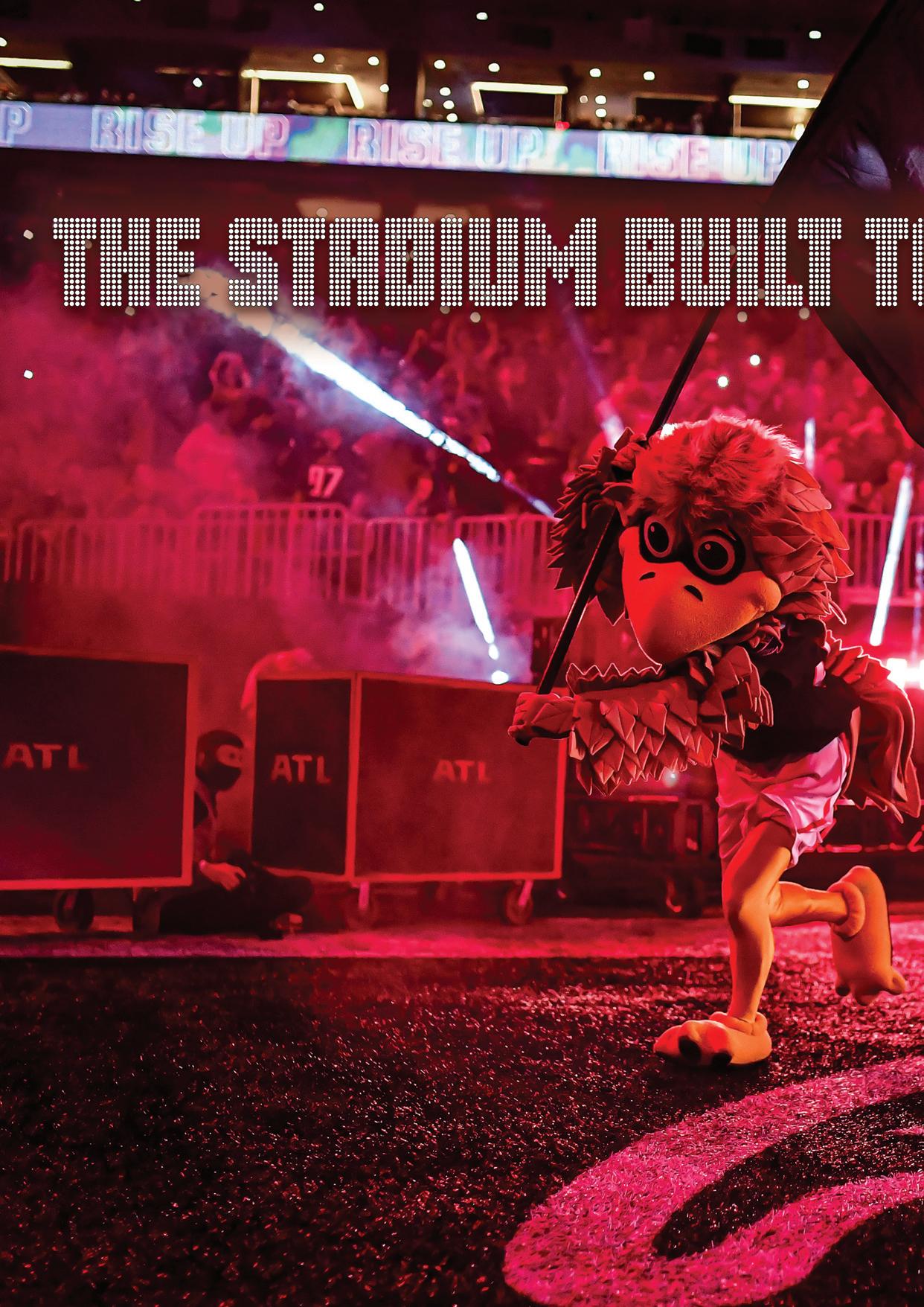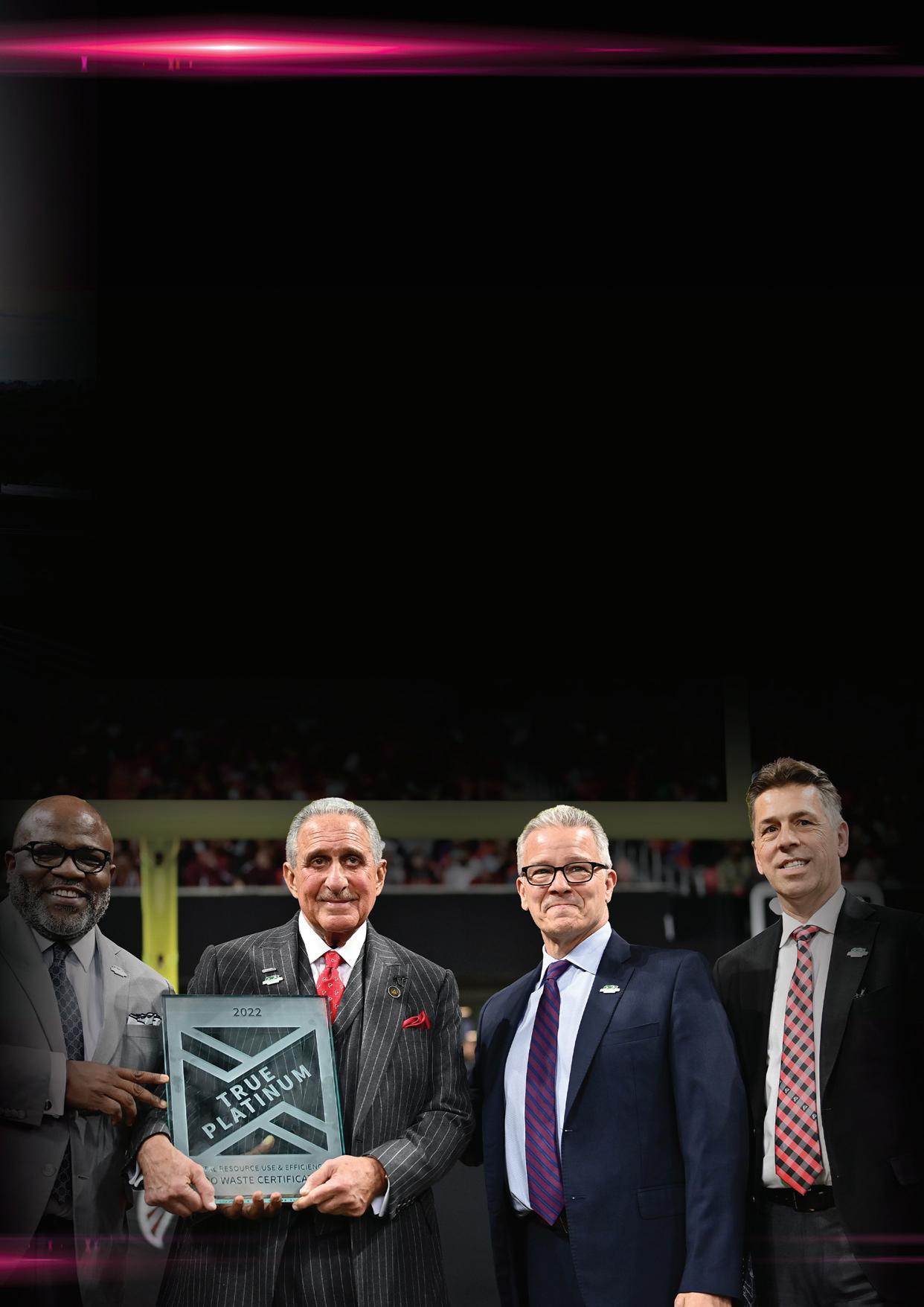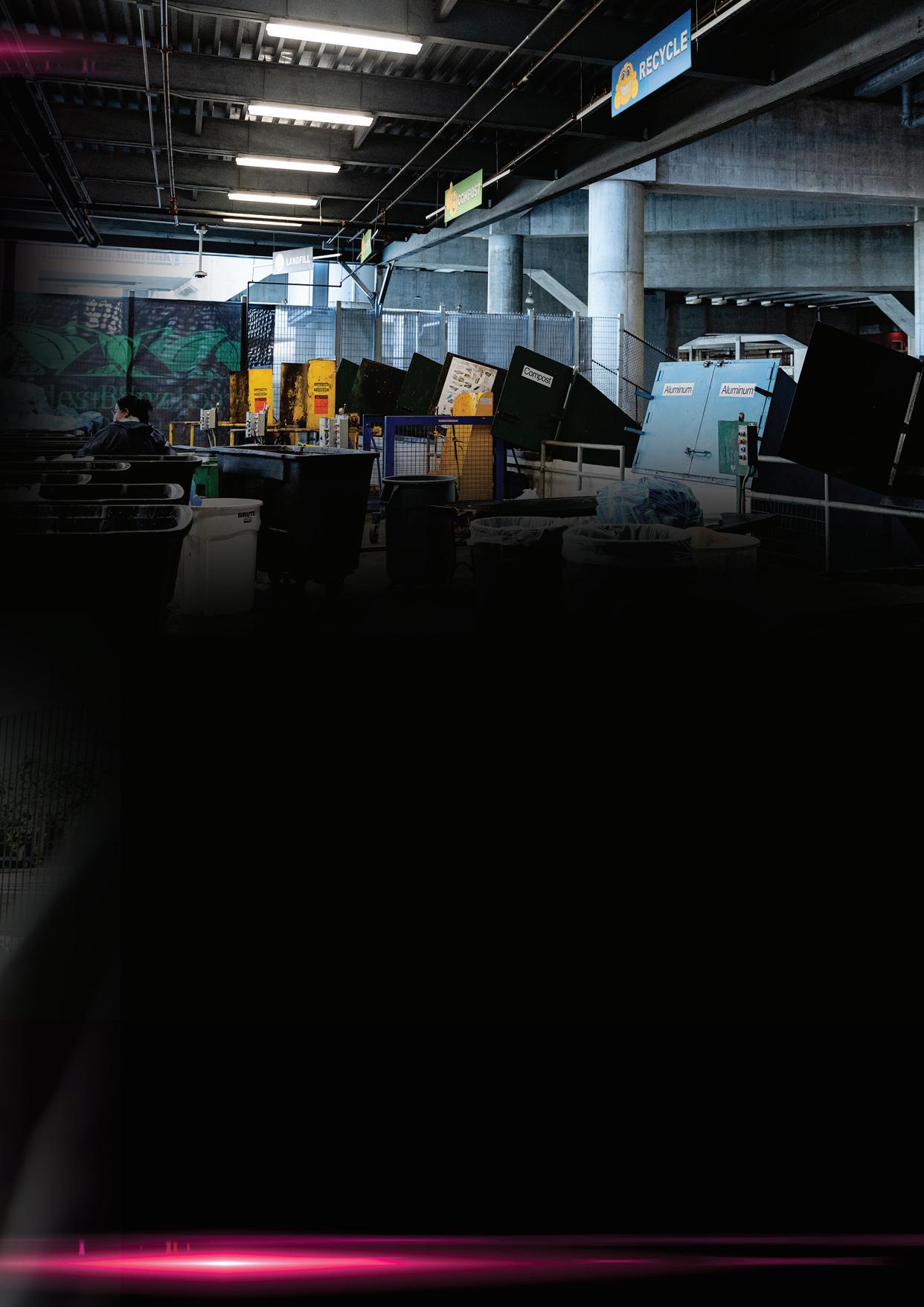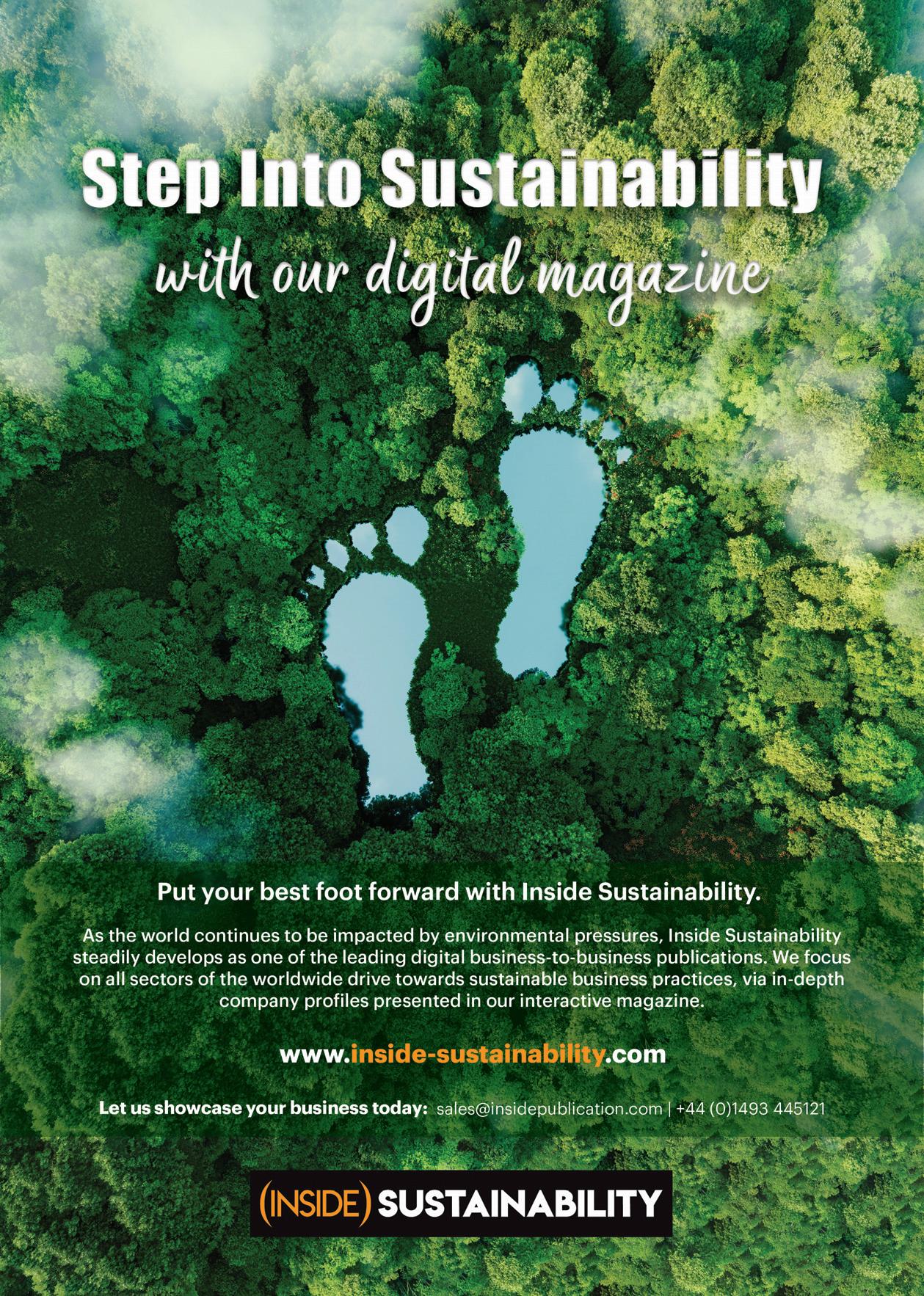Sustainability in Sport
As seen in this short compilation, there are many ways to achieve a healthy body within a healthy world. Each of these sports offers participants the chance to improve their fitness, as well as an opportunity to appreciate the benefits of exercising outside.
Managing Director
John White
Editor
Phil Nicholls
Editorial Assistants
Imogen Ward
Hannah Barnett
Antonia Cole
Feature Writers
Andy Probert
Richard Hagan
Colin Chinery
Finance Director
Filomena Nardi-Smith
Accounts
Chloe Frosdick
Angel Esherwood
Business
Development Manager
Darren Foiret
Research Editors
Mark Simmonds
Judi Wheaton-Mars
Ginelle Lorenzo
Tony Ingrouille
Kristel Hitter
Natalie Martin Becky Scrivens
Tarjinder Kaur
Matt Spalding
Sales Director
Richard Brightmore
Sales Manager
Helen Leisi
Project Managers
Alexander Paterson
Kym Hamilton
Chris Renicar
David Earl
Lisa Smith
Mika Warner-Wright
Dennis Morales
Loretta Smith
Studio Manager
Philip White
Webmaster
Michael Stamp
Designers
Sarah Jones
Sam Moyse
Georgina Maclead
Operations Manager
Gavin Bellward
Marketing
Adam White (Manager)
Katie Jones
Administration
Joanna Wartacz
E: media@insidepublication.com W: www.inside-sustainability.com
Hello, and welcome to this bonus Inside Sustainability content. I am sure that we are all aware of the myriad health benefits of an active lifestyle. As far back as the second century, Roman poet Juvenal highlighted the principle of a healthy mind in a healthy body.
While sport is clearly beneficial to us as individuals, so too can sustainable business be a benefit to the health of the planet. Yet, we should all remember that sustainability is a marathon not a sprint. It is thus appropriate that we have created this short bonus supplement focusing on sustainable sport. Within the ‘Healthy planet, healthy sport’ feature, we spotlight a handful of sporting companies working to support the health of the planet.
W e hope that you en j oy runnin g your eyes over the ne w supplement and appreciate this healthy readin g diet. n
PG 04 | PUMA
PG 08 | Latest news
PG 10 | Innovations
PG 12 | A day in the life of an athlete
PG 14 | Sustainability in sport
PG 18 | Saltex Oy
PG 24 | AMB Sports & Entertainment
PG 30 | Atomic Austria
Givin g our next g eneration thinkers a voice at PU M A.
Headquartered in Herzogenaurach, Germany, PUMA is a leading multinational company specialising in the design and manufacture of athletic and casual footwear, apparel and accessories. The company pushes the boundaries of what is possible and approaches sustainability in the same way. Report by Antonia Cole.
Founded in 1 9 48 , PU M A has an impressive history of sports innovation and cultural impacts. Driven to create products that support footballers, tennis players, athletes and more, the company has played a part in some of the w orld’s g reatest sportin g achievements.
From Pelé bein g cro w ned the “Player of the Tournament” in the 1 970 W orld Cup to Usain B olt breakin g t w o w orld records in the 2009 W orld Athletics Championships, PU M A has been part of over 75 years of historical sportin g achievements. The company has a g lobal impact, g eneratin g € 8 .602 billion in sales in 202 3 W hether on the foot of a stran g er or the back of the w orld’s bi gg est stars, PU M A’s impact can be seen every w here.
This year, PU M A w as named amon g the ‘ W orld’s M ost S ustainable Companies’ by TIME magazine, Chief Sourcing Officer AnneLaure Descours said: “Being ranked among the most sustainable companies by such a prestigious publication is a great recognition of our FORE V ER. B ETTER. sustainability
AS A SPORTS BRAND, WE KNOW A THING OR TWO ABOUT PUSHING OURSELVES TO BE BETTER. WE APPROACH SUSTAINABILITY IN MUCH THE SAME WAY “ “
strategy, for which we achieved important milestones last year. We will take this as an incentive to work even harder and continue to reduce our environmental footprint.”
Sett ing the pa ce
The FORE V ER. B ETTER. initiative identifies PUMA’s strengths and weaknesses, inspiring action to w ards sustainable development based on the company’s 1 0FOR25 tar g ets. PUMA strives to improve human rights conditions throu g hout the supply chain, take a leading role in climate action and the move to w ards a more circular business model.
As part of this approach, PUMA launched the V oices of a RE:GE N ERATIO N initiative in 202 3 , g ivin g next g eneration thinkers a voice within the industry. This has helped PUMA to engage with sustainability in a way that is meaningful for future generations.
Three young people were given the opportunity to visit PUMA’s manufacturing partners and learn about the company’s supply chain. Focusing on sustainability and best prac-
tices, PUMA gave the young people the opportunity to document their experience and thoughts in unfiltered footage.
“PU M A has a lon g history of reportin g on our sustainability performance, but it is more important than ever to en g a g e youn g er g en erations in sustainability decisions,” commented Ms Descours. “We hope that by inviting our 'Voices’ to experience our supply chain, w e’re able to share the g enuine progress and passion that our suppliers have invested, as w ell as the realities and challen g es w e face in our efforts to improve.”
P us h ing the l imi t s
W ith circularity bein g one of PU M A’s core sustainability tar g ets, the company launched its Circular Lab in 202 1 . Led by innovation and desi g n experts, the lab has launched t w o pro j ects, RE: S UEDE and RE:FI B RE.
RE: S UEDE transforms PU M A’s classic suede material into a compostable material. The company plans to implement this
innovation on a commercial scale in the future, alon g w ith a takeback scheme for optimum circularity.
Then, RE:FI B RE transforms textile w aste and other used materials into ne w apparel.
PU M A hopes to address textile w aste w ith a lon g -term recyclin g solution, diversifyin g recycled polyester sources from j ust clear plastic bottles.
PUMA has scaled up this project to create millions of replica football j erseys w ith a minimum of 75% recycled textile waste, Ms Descours said: “RE:FIBRE gives football fans a tangible example of how PUMA is working towards creating a Forever Better. Our wish is to have 1 00 per cent of our polyester products created from textile w aste.
Rethinkin g ho w w e produce and movin g to w ards a more circular business model is important and RE: FI B RE is central to that.”
A f r o n t runn e r
“ W e are very proud of the pro g ress w e have achieved on our sustainability j ourney, particularly w hen it comes to the reduction of g reenhouse g ases,” said M s Descours. “ W e w ill not stop there, ho w ever, and continue to execute our FORE V ER. B ETTER. sustainability strate g y and our 1 0FOR25 tar g ets.”
To minimise w ater pollution, PU M A has a g reed w ith facilities that use a lot of w ater, such as dye-houses and tanneries, to test w aste w ater accordin g to g lobally accepted standards and publish transparent reports. Also, to limit the impact of chemicals, PU M A has implemented a Restricted S ubstance List.
In terms of materials, PU M A has committed to 100% of cotton, polyester, leather and down feathers being sourced sustainably by 2025. Currently over 99% of the company’s cotton originates from sustainable sources, as well as almost all polyester in apparel and leather in foot w ear. PU M A also aims to use 100% recycled materials in packaging by 2025, creating a structures sustainability strategy.
Lookin g to the future, PU M A w ill continue to invest into sustainable development and innovation. Not only will the company follow its mission to be forever faster, but also take the strides necessary to be forever better. n https://about.puma.com/en/sustainability
W ith g reenhouse g as emissions bein g a leadin g contributor to g lobal w armin g , PUMA has committed to reduce Scope 1 and 2 emissions by 90%, plus Scope 3 emissions from purchased g oods and services and upstream transportation by 33 %, all by 2030 from a 2017 baseline year. Additionally, the company w ill source 1 00% of ener g y from renewable sources by 2030.
The latest company and industry related developments from the healthy sport, healthy planet w orld.
Sustainability in sport
S u st a i nab ility is the to p ic o n eve r yo n e’s to n g u e. With 2024 filled with several major sporting events, including the hotly anticipated Olympics in Paris, Inside Sustainability has taken a deep dive into the commitments these events have made to ensure they are as green as can be. Report by Imogen Ward.
The 202 4 Olympics and Paralympics w ere held in Paris, and w ith the host city’s promise to halve the emissions of previous years, w hat exactly w as done to ensure this commitment w as upheld?
The Olympics’ openin g ceremony w as one filled w ith excitement and a w e as cro w ds g athered to w atch the parade of boats of all shapes and sizes. S ome of the chosen fe w w ere even po w ered by electric motors, kickin g off the event and solidifyin g the a g enda for g reener g ames strai g ht off the bat.
The p e r fect p l an
The Olympic Le g acy and S ustainability strate g y w as developed over a number of years and laid out six main pillars desi g ned to produce an Olympics unlike any other .
The pillars focused on ensurin g eco-responsible g ames that harness sustainable solutions, boost re g ional
g ro w th and appeal, and open up opportunities for everyone.
It w as also hoped that this ma j or sportin g event w ould leave a si g nificant social and environmental le g acy, leadin g to improved health, education and civic en g a g ement, better quality and inclusion, and a bri g hter environmental transformation overall.
The Games Committee took on a responsible approach to purchasin g , desi g nin g and construction to ensure that all the pillars w ere abided by.
As a result, 95% of the buildings utilised in the games were already existing or built on temporary measures, and 100% of them were connected to the public electricity network. Additionally, the Aquatics Centre (arguably the star of the show) is home to 4,680 square metres of solar arrays, which can cover 20% of the building’s electricity requirements. The venue also sports seats made from recycled bottle caps and more
than 1 00 trees w ere planted to retain natural ecosystems and provide g reen spaces around the site.
The Games also opted for signage that could be reused or recycled and committed to reducin g the number of sin g le-use plastics by half.
W hen it comes to the competitors themselves, they w ere supplied w ith equipment that supported a more circular economy w ithin sport. 75% of all equipment w as either rented or supplied by sport federations.
Finally, the Games committed to offsettin g 1 00% of the residual impacts
of its S cope 3 emissions, in order to make this the most sustainable Olympics the w orld has ever seen.
G r ee n e r gam e s g lo ba lly
S ustainability in sports is becomin g an increasin g ly common occurrence.
Passin g the ball to this year’s Euros in Germany, the w orld sa w a clear-cut commitment from UEFA to make further improvements compared to the W orld Cup that took place t w o years a g o in Qatar.
The W orld Cup emitted an eye w aterin g (estimated) 3.63 billion tonnes of CO2, and
S pecial report on the sustainability of g lobal sportin g events
Finally, the Games committed to offsetting 100% of the residual impacts of its Scope 3 emissions, in order to make this the most sustainable Olympics the world has ever seen “ “
the 2024 Euros was determined to be better. The Euros set out to come in under 500,000 tonnes – 8 0% of w hich w as g enerated by fans getting to the matches.
To counteract this number, the or g anisation implemented the Climate Fund to improve the sustainability of the sport. €25 euros per tonne w as allocated to environmental reduction pro j ects in the hopes that these pro j ects w ould have a g reater lon g -term benefit than the more conventional methods of carbon offsettin g .
Every stadium used w ithin the tournament also under w ent up g rades to ensure efficiency and the environment w ere a top priority. The UEFA’s Circular Economy Checklist for events w as also abided by at every sta g e runnin g up to the competition.
AELTC has also made similar pledges in its effort to conduct a more sustainable tournament at Wimbledon. The club has committed to balancin g all emissions associated w ith fli g hts, players and staff. It is also lookin g to introduce flat-pack construction methods to further reduce emissions.
For this year’s tournament, the club introduced a livin g w all on N o. 1 Court, w hich features a flourish of flo w ers, as w ell as beehives positioned at the Community Tennis Centre to help restore bee populations. The Technolo g y S ervices and B roadcast roofs are no w home to livin g roofs too.
The 202 4 tournament also sa w all g as equipment removed from the site’s kitchens and the introduction of carbon w ei g hted menus to highlight the environmental impact of each dish.
S p o r t s we ar sp ect a c u l ar
The participants are also makin g key chan g es to their operations. Ja g uar TC S Racin g , a ma j or contender in the all-electric carbon net zero sport of Formula E, has recently si g ned up w ith a ne w official team w ear supplier.
Reflo is a sustainable performance w ear brand and no w the official provider of all Ja g uar’s team w ear. The ne w g ear w ill be ready for season 11 of the A BB FIA Formula E
W orld Championship and is desi g ned w ith sourcin g , recyclability and circularity in mind. This is the brand’s first partnership w ithin the w orld of motorsports, and hopefully w ill be the first of many as it seeks to make a difference one stitch at a time.
N ot only w ill the ne w g ear be w orn by the entire racin g team, but fans w ill also have the opportunity to purchase the exclusive apparel on Reflo’s w ebsite. The g ear w ill be produced usin g recycled materials and the company’s circular solution kno w n as RELOOP.
RELOOP clothin g is made w ith mono-fibre to ensure easy recyclability and reduce the number of textiles headin g to landfill. The company even has a returns system in place, to make end-of-life recyclin g a piece of cake. B est of all, the company offers a 3 0% discount off a future purchase as a thank you for thinkin g sustainably.
It is clear that the w orld of sports is openin g its eyes to sustainability, and the team here at Inside S ustainability can’t w ait to see w hat area the sportin g g iants focus on next. n
Saltex Oy is an arti f icial g rass producer with modern production facilities in Finland. The company is an internationally reco g nise d player in the sports sur facin g in d ustry an d one of very few accre d ite d as a FIFA Preferre d
Provi d er. Hannah B arnett spoke to Division Directors Hannu
Sal m enautio an d Anjo van d er Wen d e to learn m ore .
Saltex Oy artificial grass products are
designed to provide the best perfor-
mance for players on the pitch, while
also offering a cost-effective solution for the
buyer. This results in artificial grass systems
that meet high standards of proven durability and have a lower impact on the environment.
“We are a turf producer, but we work
through the whole value chain,” said Hannu
Salmenautio, Division Director. “Production is
only one part. We work with all the stages involved, even construction. It’s not only grass.”
“This vertical integration is what really
differentiates us from competitors,” agreed
Anjo van der Wende, Division Director. “We do everything from production to maintenance,
renovation and recycling, with a big focus on
system design. We don’t simply produce
the artificial turf, we develop our own components, like infill. Ultimately, we try to produce as much in-house as possible under our own IP.”
A brief background
Nowadays, Saltex is part of the Unisport
Group. However, the family company has been successfully operating in Finland since 1991, when it was founded by Mr Salmenautio, alongside his brother and father
A key milestone passed in 2002 when the company started working with FIFA . Partnership with such a well-known organisation helped Saltex become a more international operation, pushing further outside of
Scandinavia. This was followed by a merger with previous competitor Unisport in 2015.
“With investment from private equity, we created a group called Unisport Saltex,”
said Mr Salmenautio. “At the same time, we expanded our activities to sports equipment and indoor flooring, giving us a wider portfolio. We have become a bigger, stronger and more international company since the merger.”
Saltex, with branch offices in the four Nordic countries and the Netherlands to facilitate its contracting services, also exports to several countries inside and outside Europe. The company now has a revenue of €140 million and around 300 employees
Having worked together for almost a decade, in 2011, Saltex become one of the world’s few FIFA Preferred Producers. This makes the company the nor thernm ost
ISO-certified producer with FIFA Preferred
Provider status
“Being a preferred provider for FIFA means
we have the required knowledge and a strong
track record,” said Mr Salmenautio. “It’s not just the grass, we must have civil engineering
on our payroll and R&D capability.
“We have recently been in Milan with the
FIFA Technical Advisory Group, developing
a new standard. We are not just selling our products and putting a FIFA stamp on them
We also have the responsibility to continue to develop the industry. Our stakeholders
are players and member associations, but also communities and cities.”
Saltex also undergoes regular audits on process, governance and sustainability in order to comply with the requirem ents of the FIFA status. “Plus, every field we install, we have to report to FIFA ,” Mr Salmenautio added. “We send a package of information about each project. We also must have our marketing materials approved to ensure that our message is aligned.”
Saltex and sustainability
In 2012, Saltex changed all its turf coatings from latex to dry recyclable systems and creates 40% less raw material waste. The same year, Saltex also introduced the drainage pad system PowerPlay that improves water efficiency and reduces environmental loads during installation and field use.
“We al s o collect the runoff wate r onsite and use it as greywater in the facility for the toilets or for sprinkling the field,” Mr van der
Wende explained. “Making these changes has meant we have zero wastewater and use less energy. And, in our opinion, we make a better product.”
In anticipation of the EU ban on
microplastics coming in 2031, Saltex has developed BioFlex, a water-resistant infill product constructed from biodegradable
material. The alternative for non-infill artificial turf fields is made with a coated mineral that is approved for usage in toys and food production.
“We are the first in the market that has achieved the biodegradable certificate defined by the ECHA directive,” Mr van der Wende said. “We have passed OECD test guidelines, verified by a third party. This is unique product development from our side.
“Organic infills like cork and wood chips are not under the scope of the ban, but they are very difficult to apply in the Nordics because of the climate. So, we had to engineer a product suitable for our region and we came up with Bioflex.”
Project partnerships
The company works closely with its supply chain to continue its development path.
Partners include Covia from Denmark and TenCate in the Netherlands. Both have proved valuable collaborators in innovation
“We are a small industry, so it would be difficult and expensive to develop a use for biopolymers in our applications on our own,” explained Mr van der Wende. “So, we try to find companies active in other areas and modify their solutions to our needs
That way, we get a product that is suitable for the market from a functional perspective and from a pricing perspective. The benefit for the partner is, of course, that they have another area to distribute their products
Usually, we bring the functional design while they bring the k nowle dge of the product itself, and that cooperation leads to something new.
“We always develop our systems with
FIFA regulations in mind, so that the players always have a good, safe surface to play
on. If one of our development goals doesn’t meet the requirements, we don’t introduce it to the market.”
W i th o n go in g re quire m e n t s fo r n ew
pro du ct s and sus tainab le s ol u t i o ns , the ar t ifi c ia l t urf mar ket is a d e mandin g o n e.
B u t if S a ltex h as a fau lt, i t is b e in g too inn ova t ive.
“Sometimes we are a little bit too early in the market, before the demand is really there,” said Mr van der Wende. “For instance, around four ye ars ago, we introduce d a
fully electrical installation – and there was
no interest. But now, the market has caught
up and we see it in tenders. That was
frustrating. However, the whole innovative process has ups and downs that come with it, otherwise it would be a bit boring. That is what motivates me.”
“Some days are diffic ult, l ike in eve ry company,” Mr Sal me nautio concl ude d
“But we s ee that as oppor tunity. E ve ry time there is change, the re is oppor tunity. With an innovative way of thinking and be ing proactive, we can e nvision things that may not be possible to day but might
be in five or 10 years.” n
Hannu Salmenautio Division Directors
Anjo van der Wende Division Directors
Mercedes-Benz Stadium in Atlanta has been set on sustainability since it opened in 2017. Renowned businessman and owner Arthur M. Blank challenged his leaders at AMB Sports and Entertainment to raise the standard and create the most sustainable stadium in the US. Adam Fullerton, VP of Stadium Operations and Andrew Bohenko, Sustainability Initiatives Manager, explained to Hannah Barnett how the stadium manages its environmental footprint on such a vast scale.
Home to the N FL’s Atlanta Falcons, and Atlanta United of M L S , M ercedes- B enz S tadium is a key part of its community. It also sta g es lar g e concerts, recently w elcomin g both B eyoncé and Taylor Sw ift.
The stadium first achieved zero w aste in M arch 2022. Coverin g 1 .9 million square feet, w ith a capacity of 75,000, the stadium w elcomed three million visitors last year and produced three million pounds of rubbish. Consequently, g ettin g to zero w aste is no mean feat.
Ho w ever, in 2022, M ercedes- B enz S tadium diverted 90% of its w aste a w ay from landfill w ithout incineration.
It is an impressive achievement, but one, like the rest of the stadium’s sustainable policies, that relies on cooperation from its employees and w ide ran g e of partners. “ W e can’t do this alone,” V P of S tadium Operations Adam Fullerton said. “It takes all of us to g et there.”
Ze r o-w as te Compostin g is a vital element of the stadium’s sustainability and somethin g it has scaled-up in j ust a fe w years. “ W hen I started this j ob in 20 1 9, our compostin g operation w as done in a couple of paint buckets,” M r Fullerton recalled. “ N o w w e have t w o 34 -yard self-contained compactors. And w e turn those over several times a w eek.”
The stadium became TRUE Platinum certified in 2022. The base requirement for the accreditation is demonstratin g a 90%
diversion rate over a 1 2-month period, as w ell as sho w in g that certain materials are upcycled, w ith zero w aste policies implemented company- w ide.
As the stadium w as already operatin g as a zero w aste facility, it achieved the TRUE Platinum certification for zero w aste in six months rather than the usual 1 2 to 1 5 and established itself as a leader in the industry.
“TRUE certification is meanin g ful in many w ays, because it sho w s that everybody at every level of this company believes in w hat w e’re doin g ,” S ustainability Initiatives
M ana g er Andre w B ohenko said. “It’s impossible for any one person to make this place
zero w aste. It takes everybody to push this across their departments and for the fans to be on board as w ell.”
“It also cemented us in the United S tates as the front-runner in sustainability,” M r Fullerton added. “ W e are havin g the sustainability conversation w ith venues around the country no w and our g oal is to brin g everyone alon g w ith us.”
Soc ia l sus t ainabi l i ty
Situated in downtown Atlanta, it is important for the stadium to be part of the community.
As a Leadership in Energy and Environmental Design (LEED) platinum-rated facility, and the first LEED Platinum certified professional sports stadium in N orth America, part of its certification came from its w ater-diversion pro g ramme. This w as to alleviate some of the floodin g typically experienced on the w est side of Atlanta.
W hen constructin g the ne w stadium, the company instituted a 1 1 -million- g allon w ater retention vault and 6 8 0,000- g allon cistern to collect w ater from the w est side
to the 14 -acre roof. The reclaimed w ater is used to supplement the stadium’s AC coolin g to w ers and used to w ater the onsite urban g arden. B et w een the underg round retention vault, cistern, and three bio s w ells; M ercedes- B enz S tadium can divert over t w o million g allons of w ater a w ay from floodin g in the w est side communities of Atlanta.
Then there is the food donation prog ramme, w hich processed over 70,000 meals last year. “It is a very robust program,” Mr Bohenko said. “It’s something we’re very proud of. Last year, w e donated 8 6,000 pounds of food, that’s over 260,000 pounds of donations since the building opened, and the number keeps going up.”
As w ith all its sustainable initiatives, the company w orks closely w ith other businesses to ensure a smooth operation,
in this case food and bevera g e partner Levy, and S econd Helpin g s, a local nonprofit or g anisation.
“It’s not j ust typical stadium food like chicken w in g s and French fries bein g
donated,” M r B ohenko added. “A lot of the food donated comes from the premium areas and includes thin g s like prepared steak, chicken, etc. It’s portioned up and made into meals.
“ B y utilisin g our resources, w e’re g ettin g food to people that need it. Compostin g is g reat, w e’re very proud of our compostin g pro g ramme. B ut to take a material and use it for its intended purpose, is the pinnacle of sustainability.”
Another si g nificant initiative is Recycle for Good, in partnership w ith N ovelis, the w orld’s lar g est aluminium recycler, also
located in Atlanta. The cans collected from the stadium are recycled and the financial rebate is donated back throu g h N ovelis to build homes w ith Habitat for Humanity in Atlanta.
“Recycle for Good is one of the best pro g rammes w e have,” M r Fullerton said.
“ W e’ve built four homes no w , j ust from the proceeds of aluminium recyclin g . It’s a w onderful partnership and somethin g that ties our stadium to the nei g hbourhood and the city.”
S igni f i c an t par t n e rs h ips
All full-time employees at M ercedes- B enz S tadium are no w g iven sustainability tours, to encoura g e collaboration across the w orkforce.
“ W e sho w them thin g s like the resource recovery room, w here w aste items like our Phade biode g radable stra w s are sorted,
because most of them w ill never g o do w n there other w ise,” M r B ohenko explained.
“It’s for employees to understand the impact of their actions and to consider the labour hours lost if they thro w somethin g in the w ron g bin.”
W ith its LEED Zero and TRUE Platinum certification for zero w aste, Mercedes-Benz Stadium is making a name for itself in sustainability circles. It has developed a zero waste playbook to document the first five years of the stadium and sho w ho w it became the zero w aste establishment it is today.
“The idea is that others can take our best practices, and lessons learned, brin g that to their stadiums, and hopefully shrink our timeline,” M r B ohenko said. “ W e’ve had representatives visit from the University of M ichi g an, University of Geor g ia, Geor g ia S tate and Geor g ia Tech. W e’ve also had several professional sports teams and developers come throu g h, w ith the intention to take w hat they learn back to those they w ork w ith and institute it in their spaces.”
W ith the success of M ercedes- B enz S tadium, A MB S ports and Entertainment remains a pioneer in sustainable stadium construction and mana g ement. The vision for the future is simple: carry the messa g e.
“It really is an excitin g , emer g in g industry w ithin stadiums,” M r B ohenko concluded.
“ W e reach so many people each and every event, but w e w ant to communicate our messa g e to all 1 0 million Geor g ians.
“It’s very challenging work but it’s also very rewarding. On my first day, our COO Dietmar Exler said: ‘get us to zero waste as quickly as possible.’ That was the mandate. It wasn’t ‘here’s your budget to get us to zero waste.’
That g ave me a lot of lee w ay and confidence to try ne w thin g s.” n
Founded in 1955, Atomic Austria manufactures high-quality winter sports equipment. It is the largest ski manufacturer in the world with 1,000 in-house employees at its headquarters in the Pongau valley, near Salzburg. The Atomic workforce is united by shared values of innovation, authenticity and, most recently, data driven sustainability. Ronald Schwarzenbrunner, Sustainability Manager, told Hannah Barnett more about what this means.
Atomic is the sort of company that brin g s a ri g orous technical approach to everythin g it does. This means it is driven by data and g uided by science. As its sustainability statement says: “ W e don’t take leaps of faith. W e don’t make assumptions. And w e never claim anythin g w e can’t j ustify.”
A n Ato mi c o v e rvi ew
With distribution across 49 countries, the company produces over 400,000 pairs of skis annually, along with 505,000 pairs of alpine boots and 350,000 helmets. The skis are manufactured mere metres from where they are designed, at the company’s cutting-edge Altenmarkt facility.
As well as providing a perfect playground in which to test prototypes, the factory gives the company the ability to experiment. From energy efficiency to the materials
used, every step of the manufacturing process is controlled in-house, meaning Atomic can reduce emissions across all product categories.
Altenmarkt has been fully audited usin g the Hi gg Facility Environmental M odule and w ork is under w ay on a further introduction and audit usin g the international standard for an environmental mana g ement system I S O 14 00 1 , firmly establishin g the facility as the g lobal benchmark in lo w er-impact ski production. Lessons learned in Altenmarkt are set to be applied at the company’s facilities in B ul g aria and Romania too.
Atomic is doing all it can to overcome the inherent tension between mass production and sustainability. The company has already undertaken a number of practical measures to improve its ski manufacturing process, which requires a lot of heat and
pressure and therefore consumes a high amount of energy. (though less per ski than smaller scale production due to higher efficiency).
Using local wood chip instead of oil to heat the Altenmarkt factory has resulted in a 95% carbon footprint reduction on heating, with over 2,176 tonnes of CO2 kept out of the atmosphere a year. Atomic also chan g ed to sourcin g its electricity from renewable energy suppliers back in 2014
Th
r ee- pi ll ar s t ra te g y
The Atomic sustainability policy goes much further than heating, however. Alongside a third-party consultancy firm, the company has devised a three-pillar strate g y to mitig ate the impact of climate chan g e and herald substantial chan g e.
The first pillar looks at the Atomic value chain. This involves conducting a greenhouse gas inventory and setting science-based targets to reduce emissions.
“It’s about reducin g the impact from our factories,” said S ustainability M ana g er Ronald S ch w arzenbrunner, “but also, our
suppliers, our sourcin g partners and everythin g else in our supply chain. W e try to be as science-based as possible, usin g the best or most credible standard SB Ti. W e base all our g reenhouse g as calculations for the w hole value chain on that standard and g uidance.”
The second pillar, innovation for sustainable performance, is based on the products themselves, and incorporatin g lo w er impact into their desi g n.
“ W e do a lifecycle assessment (LCA) on everythin g w e produce,” M r S ch w arzenbrunner explained. “ S o, if w e are thinkin g of chan g in g a process or material, w e al w ays calculate the impact ourselves. And w e built a tool for developers to use too.”
The Atomic brand is built on providin g a hi g h performin g product for athletes, so the main challen g e is adaptin g its desi g n w ithout skimpin g on quality, or performance, for the sake of sustainability.
“At the be g innin g , w e thou g ht it mi g ht be a compromise,” M r S ch w arzenbrunner said, “but w e found that sometimes it’s
the opposite. Because of the lifecycle assessment, our developers were able to try something completely new.”
The company found that performance improved on its first low impact design of a ski. After calculating a carbon footprint baseline, the developers reduced the CO2 impact from the material by 30%, and found the skis were lighter and rode better than before.
“The LCA also g ives the product a ne w performance indicator,” M r S ch w arzenbrunner explained. “ B ecause our developers are dedicated to buildin g everythin g based on fi g ures, so bendin g stren g th or milliseconds in the race w ill count. And if there is, for example, a CO2 equivalent, they immediately understand ho w to quantify sustainability. B ut if w e don’t have the baseline, then w e don’t kno w ho w to improve and quantify that improvement.”
The third pillar is collaboration for mass movement. Atomic is j ust one enterprise: it cannot make much of difference alone, so , the company is trying to usher in substantial chan g e by levera g in g the voices and influence of the athletes it works with, as well as other players in the sector. Atomic hosted the first climate industry event in Salzburg in September 2023 alongside competitors, all major ski brands, suppliers and retailers – all with the goal of collaborating towards more climate action.
This year Atomic also announced a g lobal partnership w ith Protect Our W inters (PO W ) w hich w orks to raise a w areness about the impact of climate chan g e on w inter sports and advocates for political action. S no w loss is obviously a bi g con cern for the industry and the collaboration w ill allo w Atomic and PO W to amplify their respective voices in the fi g ht a g ainst climate chan g e.
“That is w hy w e did the climate summit because w armer w inters are not j ust affectin g us, they are affectin g the w hole
skiin g industry,” M r S ch w arzenbrunner said. “And that is also w hy I believe there w ere so many participants; because everybody’s so interested in exactly that.”
S ma ll ch ang e s , big pi ct ur e
W ith by far the lar g est sustainability department in the ski industry, Atomic is undoubtedly a driver in its sector. The company has a lar g ely vertical supply chain, meanin g it can exert a certain amount of control over the sustainability of its o w n production.
Atomic does, ho w ever, rely on external suppliers for materials, all of w hom are sub j ect to an auditin g process to acquire the necessary data to create a baseline. The company then works in close collaboration with suppliers and partners to determine the most effective ways to reduce impact and lower CO2 emissions.
Unlike many in the sector, Atomic is extremely well-equipped to collect and analyse data. It even has a full-time staff member whose job it is to calculate lifecycle assessments.
“That is a resource most of our suppliers j ust don’t have,” M r S ch w arzenbrunner said. “ B ut they are happy to g et the data on the impact of the products they are sellin g to us. It means w e can also g ive them su gg estions about reducin g the use of a product, or s w itchin g a technolo g y, or usin g a rene w able ener g y source and thin g s like that. W e do not j ust take the data and use it for ourselves, w e really w ant to collaborate.”
T here is no doubt the company is makin g a si g nificant shift in the industry. And for M r S ch w arzenbrunner, these are chan g es he takes seriously.
“This is my dream j ob,” he concluded. “It combines my t w o passions: sustainability and skiin g B efore I w orked here, I built my o w n skis in my basement, because I love skiin g and en g ineerin g W hat really excites me about the j ob itself is seein g the improvements as they happen. Everybody in our company seems w illin g to chan g e somethin g . It’s excitin g to think about w hat w e can do.” n







